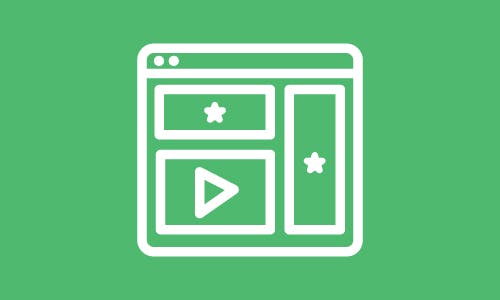The Ultimate YouTube Advertising Guide
BY THE NUMBERS YouTube is one of the largest search engines, second only to its…

In this day and age where your customers can sift through a veritable pu pu platter of digital information, other than adding a “CLICK HERE” button replete with flashing lights and maybe some kind of monitor-triggered hypnosis, what’s a brand gotta do to get noticed?
Turns out, plenty. From the way you structure your headlines to the bold ways you draw readers’ attention (nix the graphics that come with a seizure warning; consider catchy video instead), you can create content that is clickable, shareable, and that gets your message across in an entertaining, informative way.

You need to be able to hold your audience’s attention for that precious 8 seconds they’ll spend scanning your social media posts and other content. Storytelling creates a deeper connection with your audience and allows them to be more engaged with your brand. Don’t be afraid to tell the whole story upfront; customers will appreciate you for delivering a different entry into your brand.

In addition to telling a good story, you want your customers to receive information that’s relevant to them.
In one survey, 85% of businesses say they use video as a marketing tool. In addition, marketers who engage in native advertising in the form of blogs on related sites or sponsored posts are 13x more likely to see a positive ROI.
So, if your goal is to sell toothpicks, why not create and publish a how-to video on what to do with all those toothpicks? Then, turn around and craft a blog about the history of the toothpick and how it’s still an integral part of modern society.

Even if your story is the same — you have toothpicks to sell — the tactics you use to sell it on each platform should be tailored specifically to that platform. Use videos on YouTube, photos and videos with great stories on Instagram, short descriptions and links on Twitter, and a combination on Facebook. Or better yet, set up a Facebook group to connect more closely with your toothpick connoisseurs.
Learn what works best on each platform, and only post that kind of content there.

But how would you know which platform to use if you don’t know your audience?
The answer lies in buyer personas. Buyer personas let you speak to your audience’s needs at all stages of their journey. There’s some legwork that needs to be done to construct a persona (interviews, surveys, research, data dives), but once you’ve identified your audience, you will know which path to take to get them to convert. Kind of a “if you build it, they will come” scenario.
If you supply content to a customer in a way that builds their trust, you’ll find your credibility and your connection to them will increase.

Do a deep-dive into the keywords people are talking about and are responsive to. If you discover birdhouses are trending, why not create that how-to video on making a birdhouse out of your company’s brand of toothpicks?
In addition, research what your competitors are doing. That can be as easy as following them on social media or subscribing to their newsletters.
A competitive content audit can give you all the information to go up against — and beat — your rivals.

You know that 8 seconds of attention you’re lucky to get from your audience? You won’t even get that if the headline doesn’t attract their attention first.
Believe it or not, there is some method to the headline-writing madness. Your headline should lure your readers in. Write something they can’t resist clicking on or sharing. After all, most people share based on headlines alone.

Now for the boring (but uber important) part: Optimizing your content. You can write the most perfect post or craft a killer video but what good does that do if Google can’t find it and show it off to the world?
You’ll need to include a meta description, headers (and headlines) with keywords (use a keyword tool for the most precise information), as well as keywords sprinkled throughout (but don’t go too crazy).
Your content will also perform better if you include outbound links to authoritative sites and ALT text added to all your images.
While there’s no foolproof way to ensure your content will nail the landing every single time, creating it with all of these tips in mind can sure increase the odds that it will.